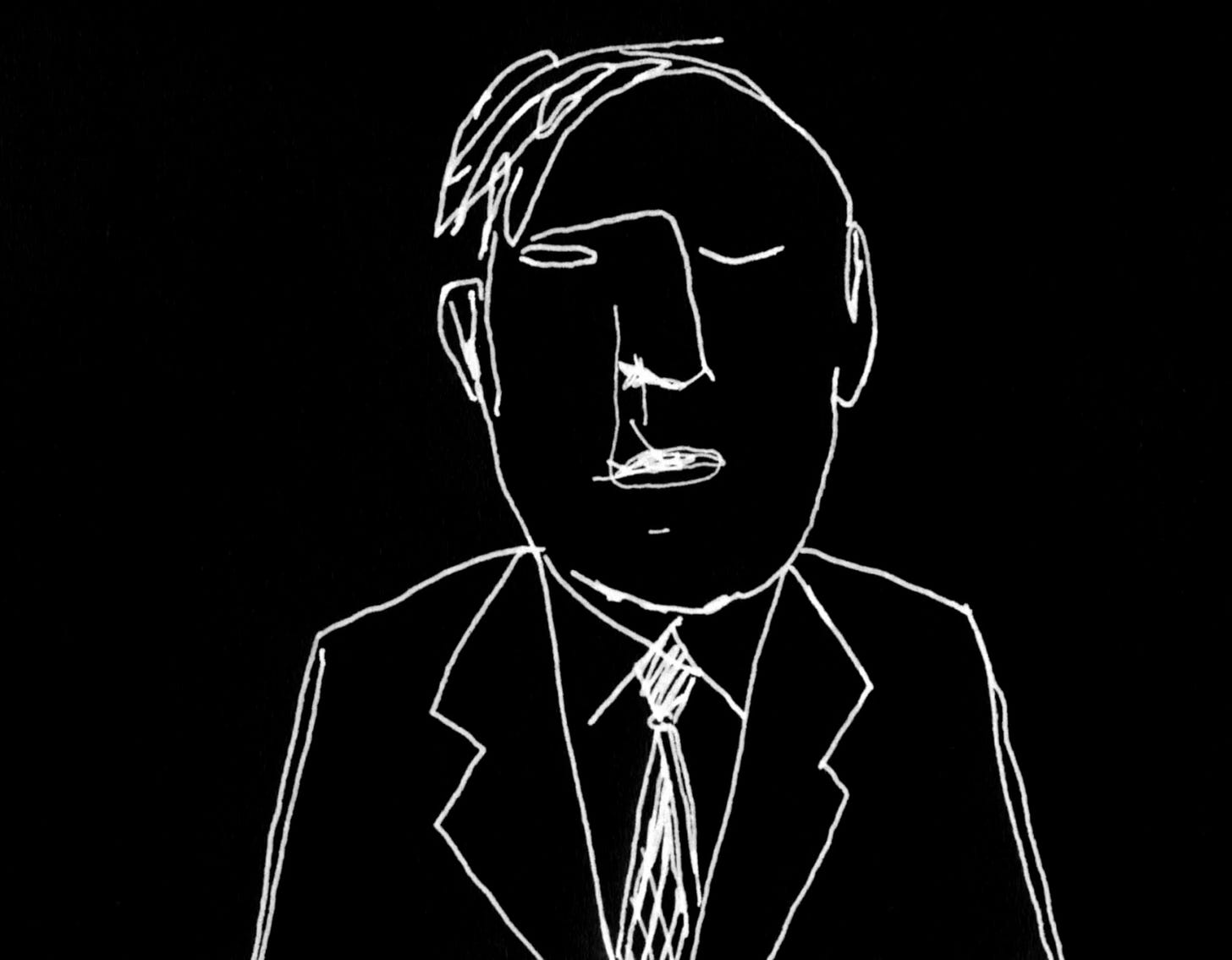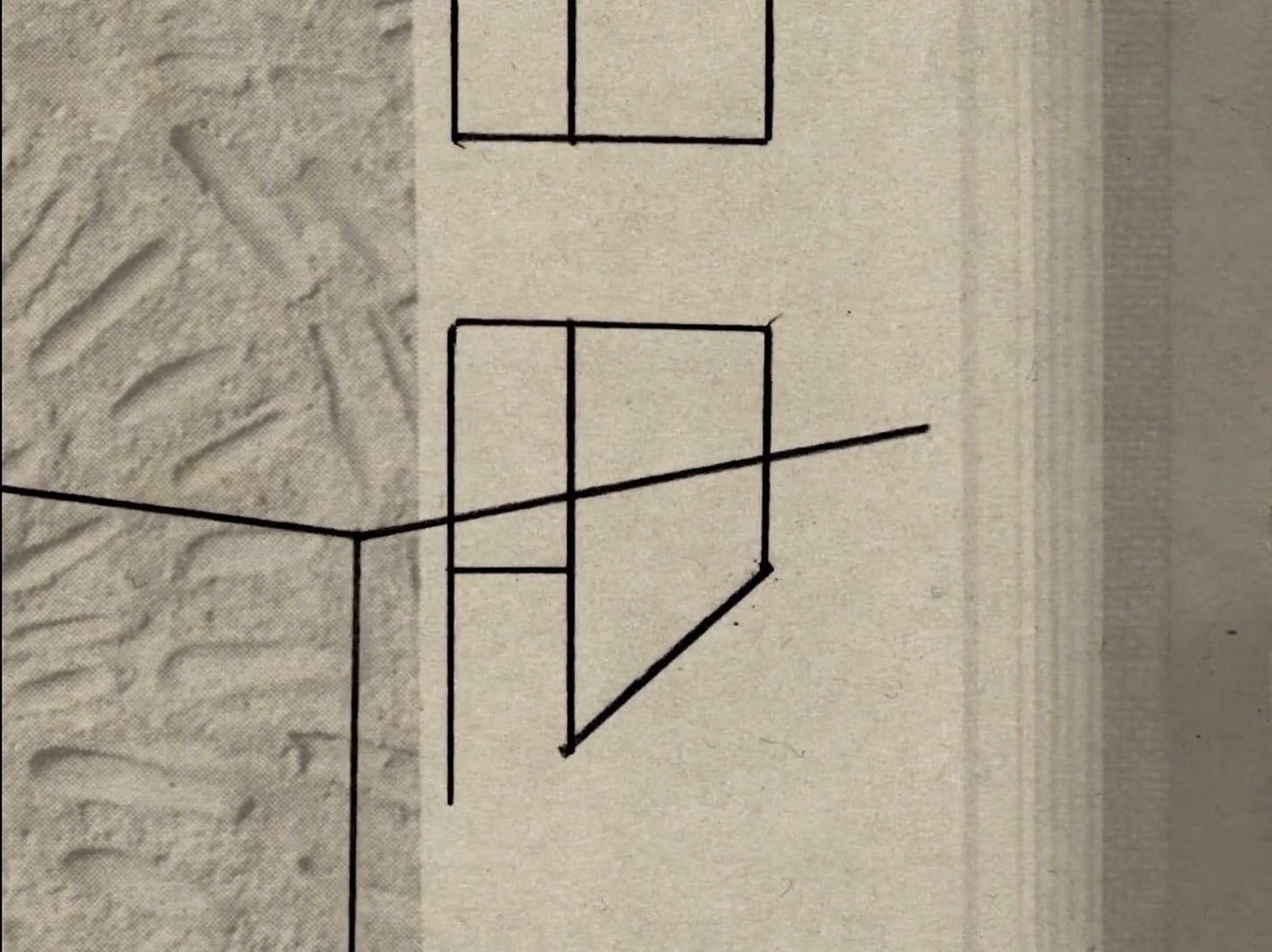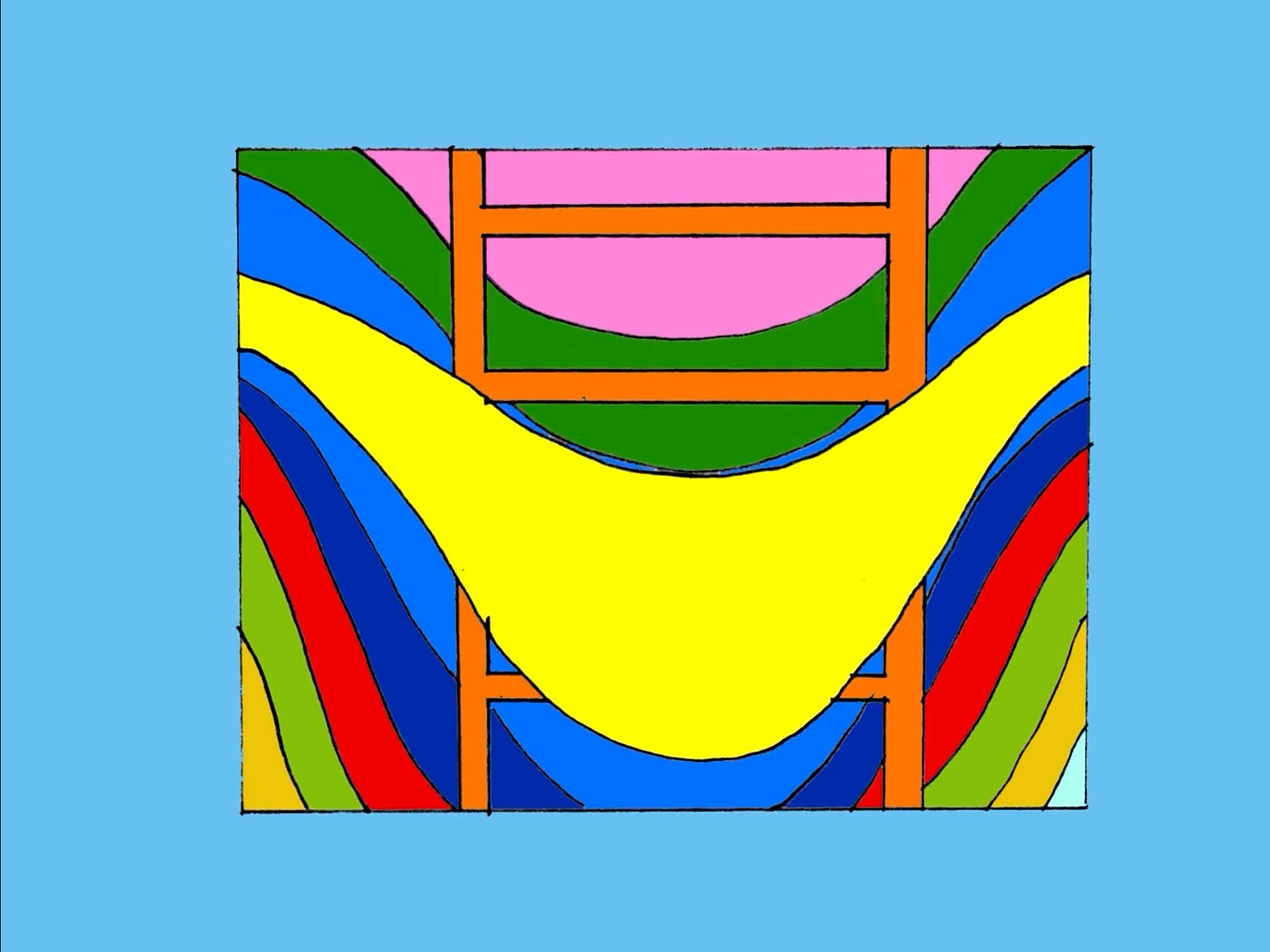The Asphodel Phases, a 24 minute film by Edwin Rostron, uses abstract, hand-drawn animation and still photos to evoke the world of amateur scientists of the paranormal: all those hobbyists equipped with shortwave radios or Kirlian cameras, picking up signals from ghosts and aliens. (Many of Rostron’s films focus on this milieu.) Dean Honer’s analog synth music recalls the scores of old sci-fi films, with its “mad scientist” bleeps and cascading sine waves. We see simple line sketch portraits of faces, drawn in white lines on a black background, each looking rather startled. Often, the faces aren’t in motion, but the cell animation makes the lines quiver nervously, infusing the expressions with energy. Photos of small religious icons are shown printed in the negative, so that they likewise exhibit white lines on a dark backdrop. Mysterious writing appears in the sky. Mysterious waveforms travel across the screen. Satellite dishes are aimed into space. Messages from the beyond seem to be popping up out of the ether.
Abstract, linear designs dance over photos of primitive sculptures, evoking the theories that the crop circles and geometric symbols of ancient cultures are proof of alien contact. The faces on these sculptures, with their simplified geometric forms and penetrating stares, have a similar quality to Rostron’s line portraits. By using close-ups on the half-tone printing in these photos, Rostron emphasizes once again how the signal of information emerges out of the chaos of noise.
Black lines form and re-form into squares, parallelograms, triangles, and other shapes. These patterns, restlessly changing, fleetingly suggest various objects (doorways, boxes, windows), without definitively representing anything. The diagonal lines verge on suggesting depth and perspective, only to relapse into flatness. It’s a visual equivalent to listening to static on the radio, trying to hear voices in the noise and faint bleeps. The mind automatically tends to assemble any pattern into meaningful representations, and whether the tendency is happening in Rostron’s mind, the viewer’s mind, or in both, becomes hard to say. The patterns keep us hovering in that tantalizing borderline, where potential meaning hovers, waiting to be born.
Halfway through, the film bursts into color, vibrant blocks of green, mauve, pink filling the geometric figures. It’s as if the supernatural voices have finally broken through, and our brains are being filled, loud and clear, with transmissions from other realms. Shapes, lines, and colors meld rapidly from one state to another, suggesting in turn landscapes, portraits, surreal vistas, an exhilarating visual proliferation.
The asphodel was viewed in Greek mythology as the food of the dead, and it does seem that when we focus our attention on the shifting patterns of visual or aural noise, their power to suggest voices and thoughts from another realm become food for our longing to connect with those we have lost. The Asphodel Phases dances in this liminal space, where hidden messages seem always ready to emerge, and arouses not only our eyeballs and our attention, but our desire for transcendence.
My articles on experimental film are freely available to all, but are supported by monthly and annual donations from readers. Please consider becoming a paid subscriber to support my work. Thank you.






